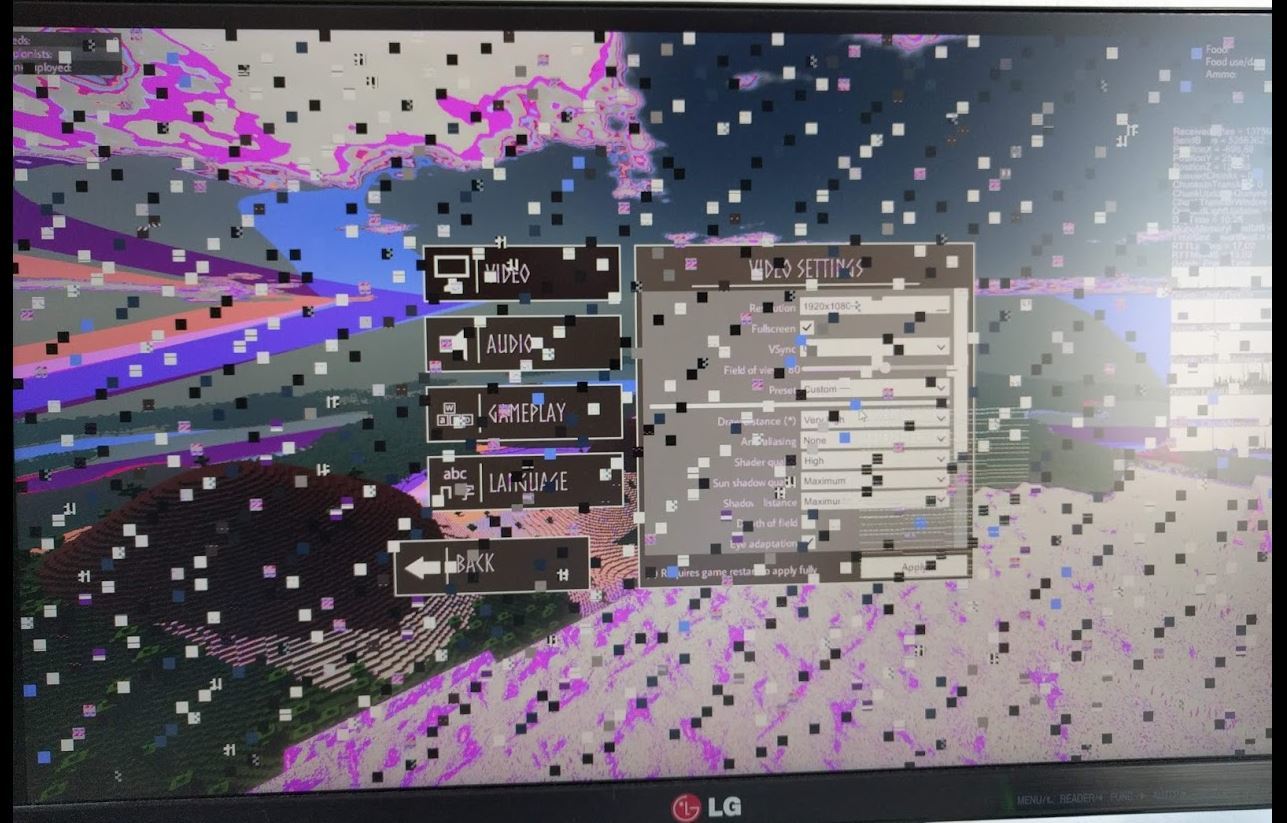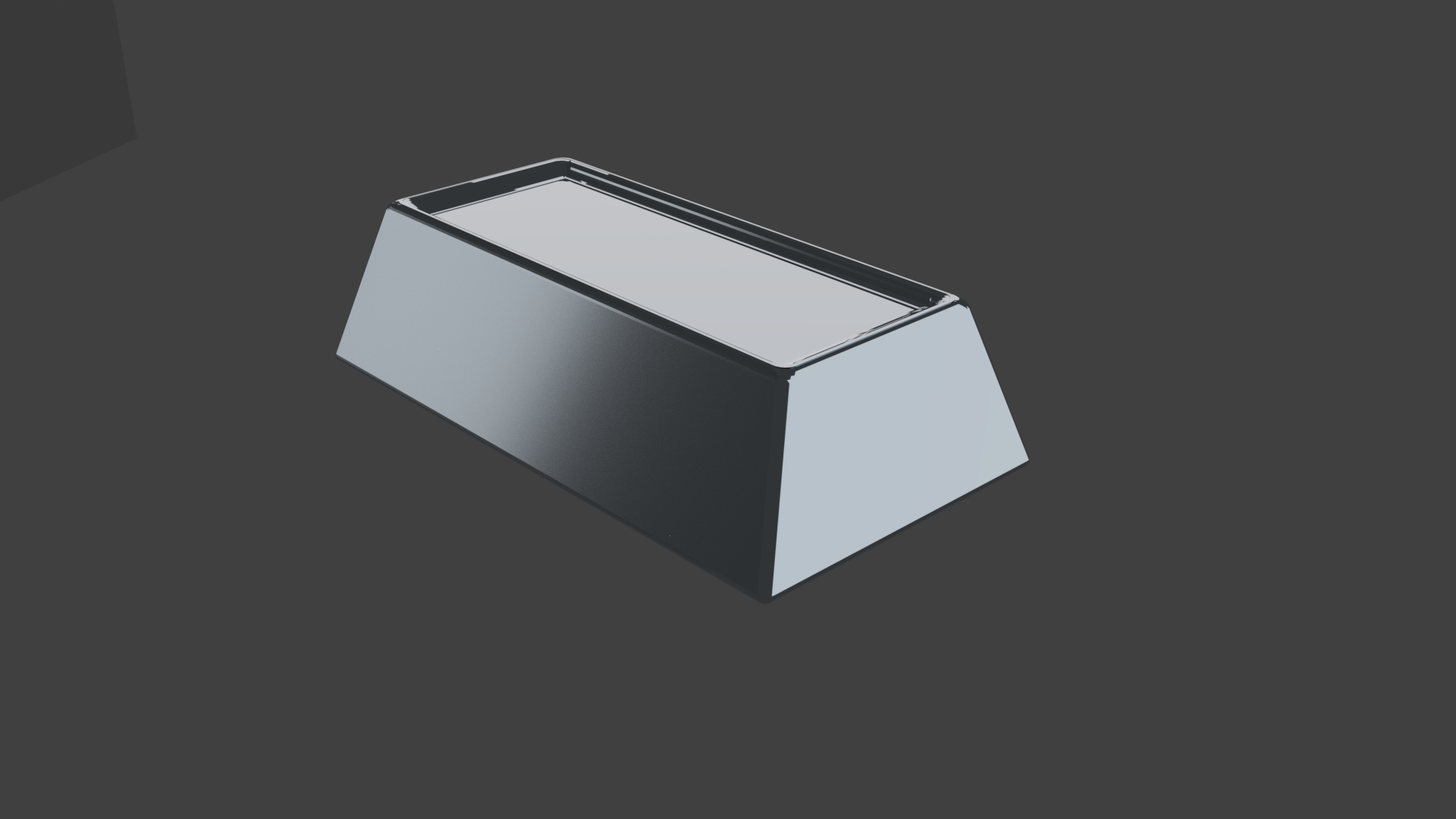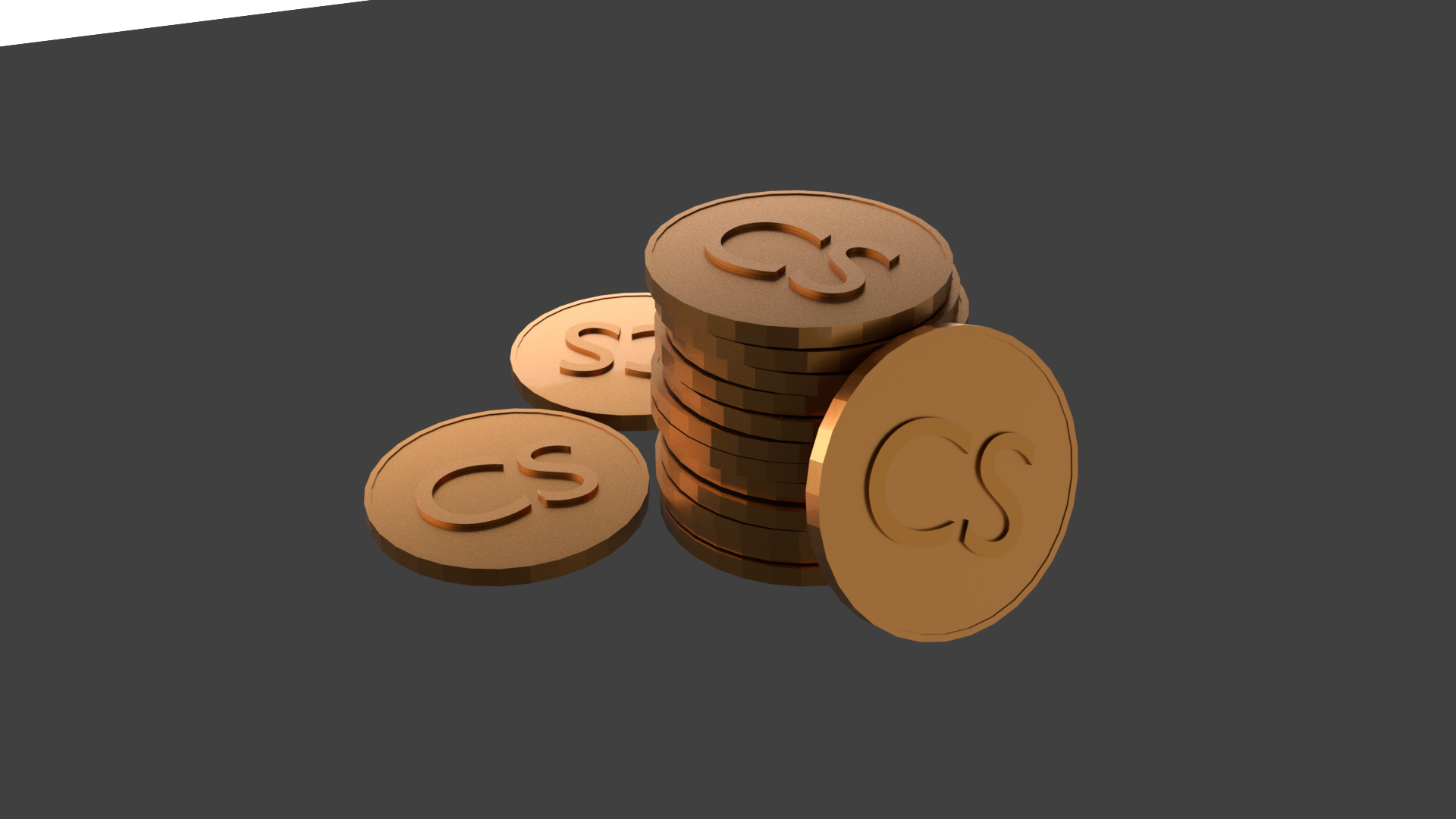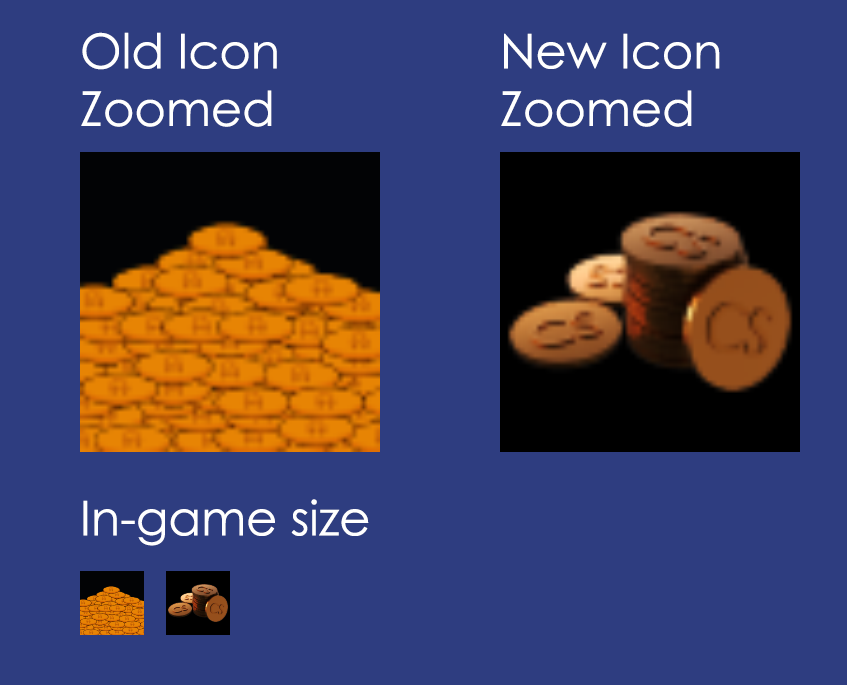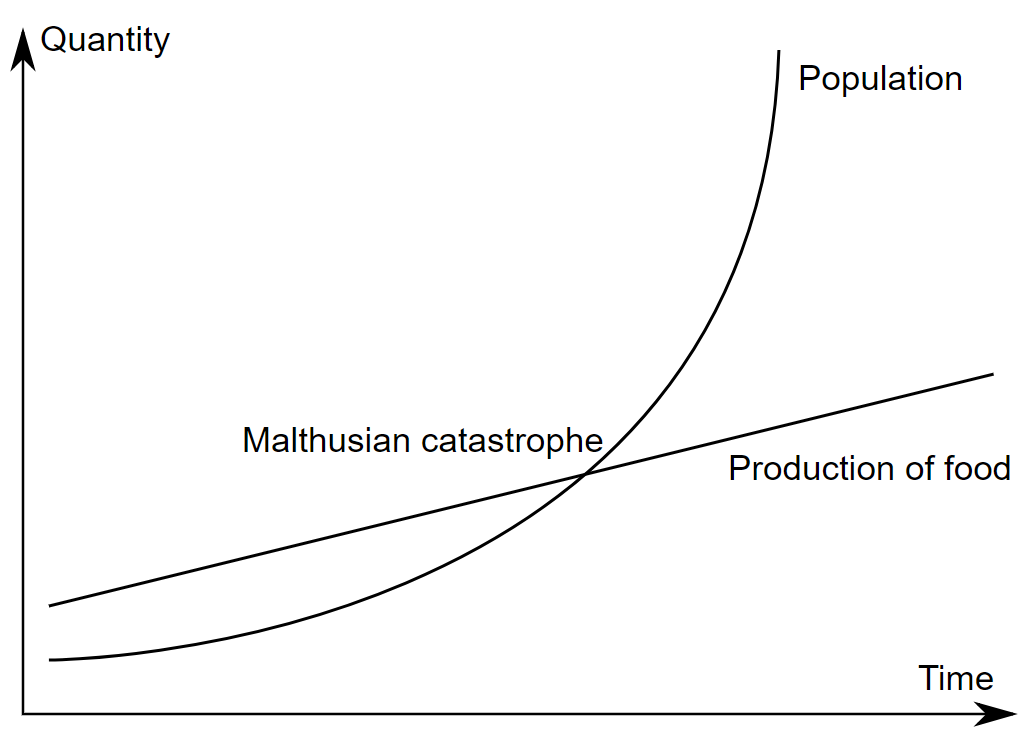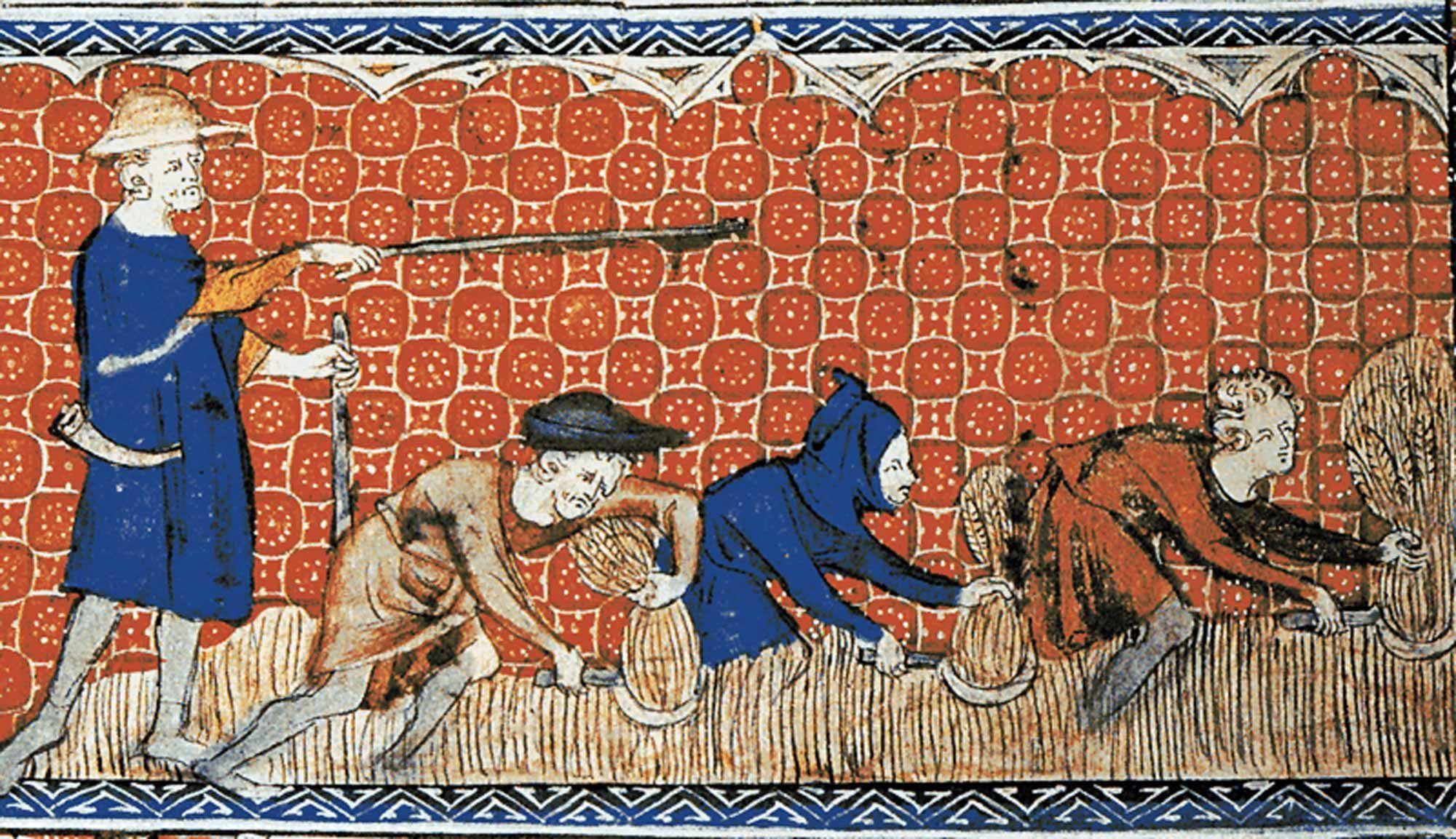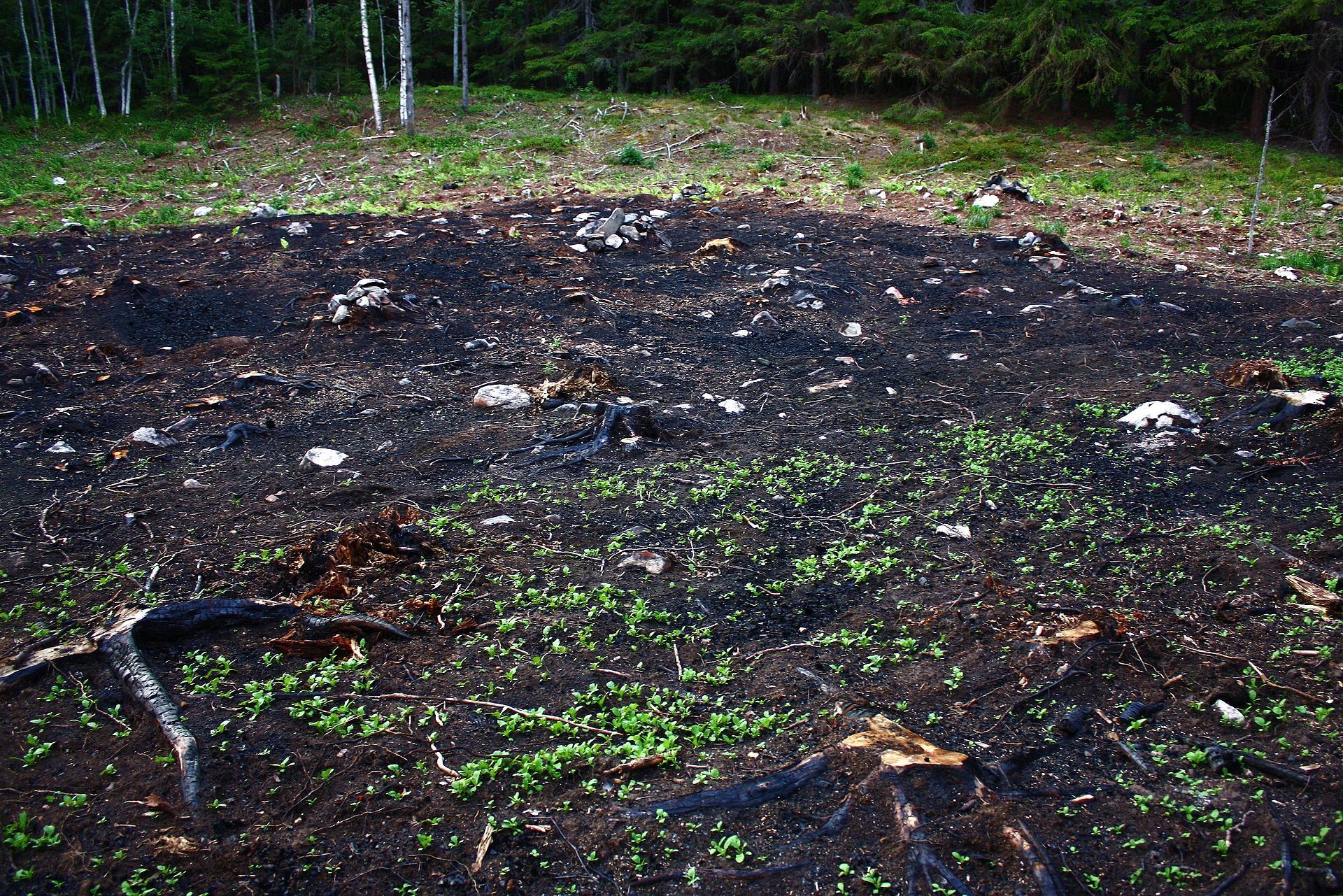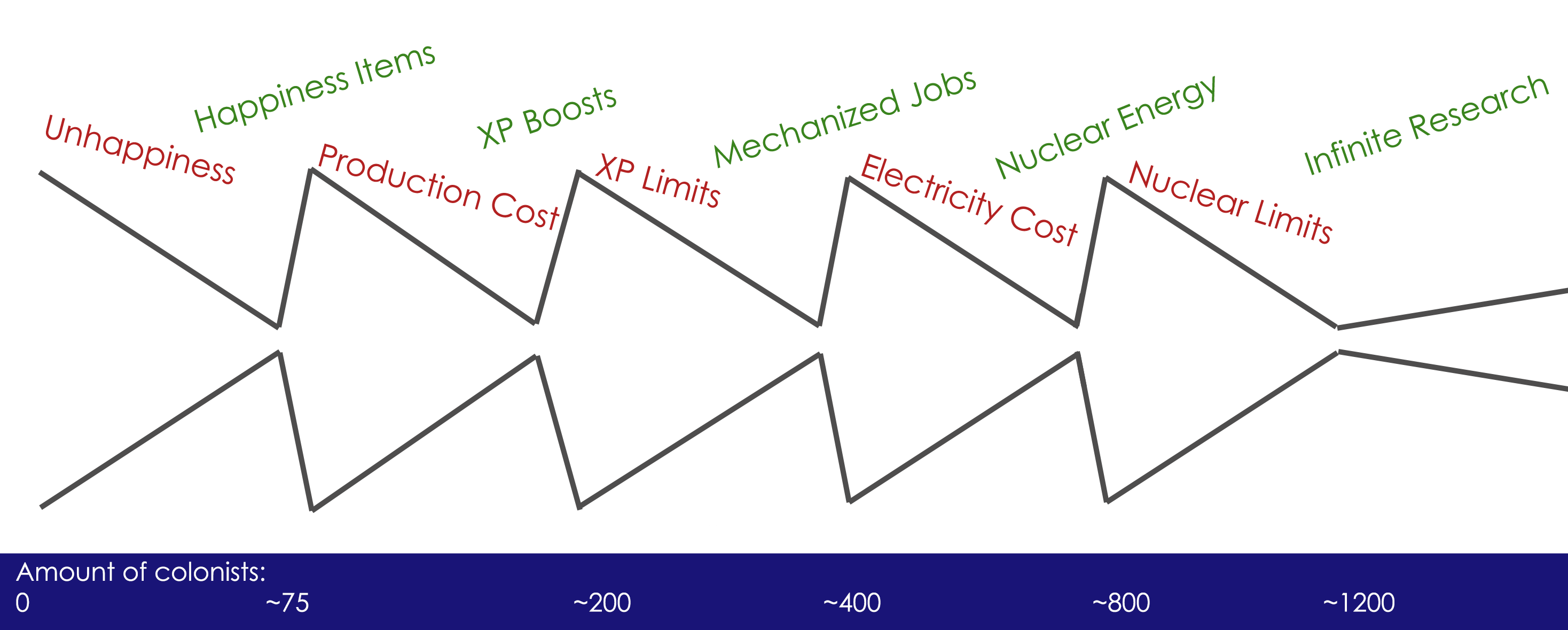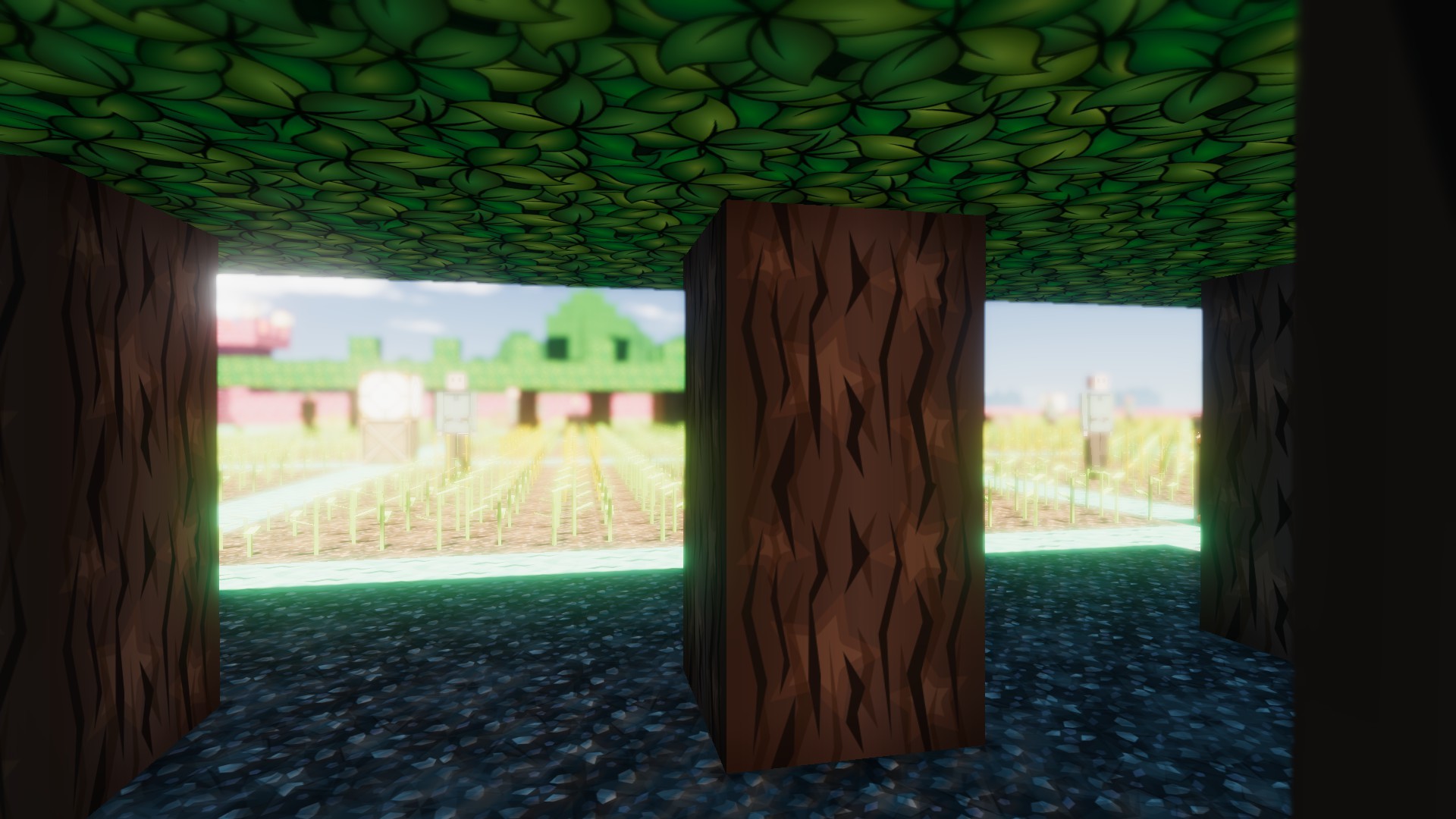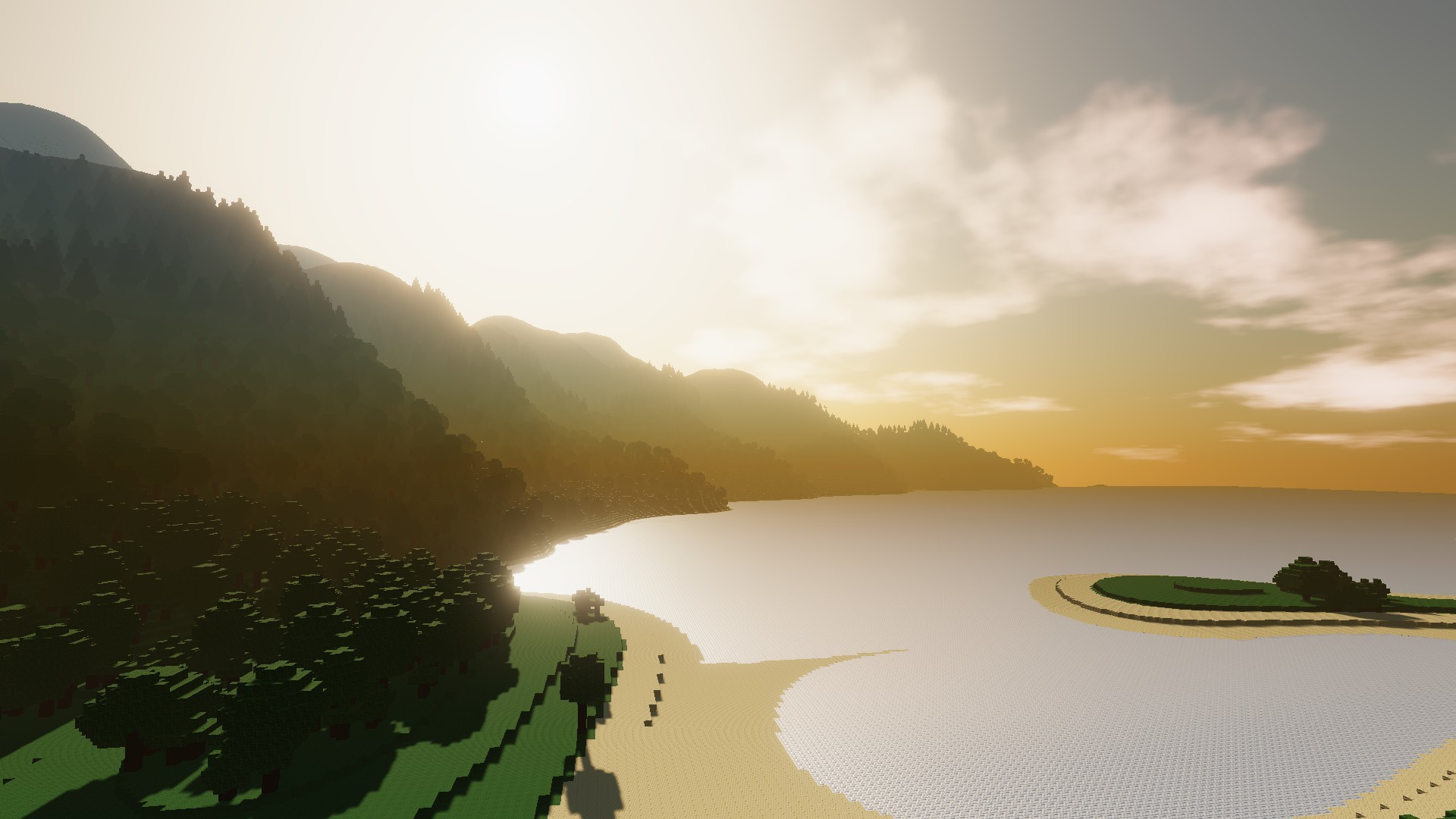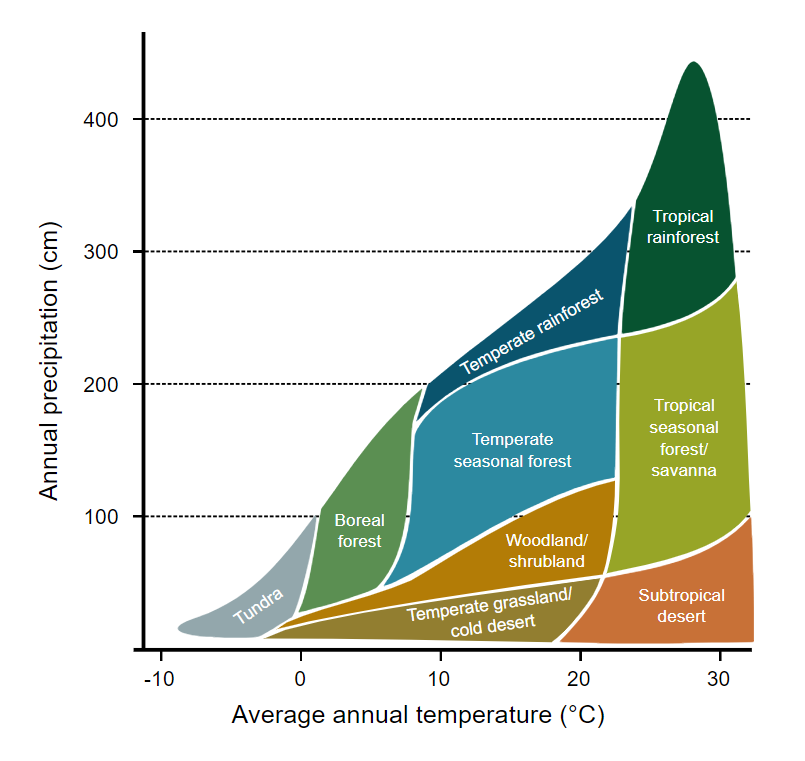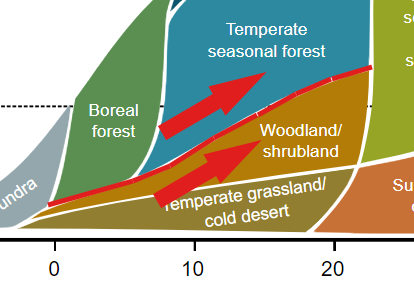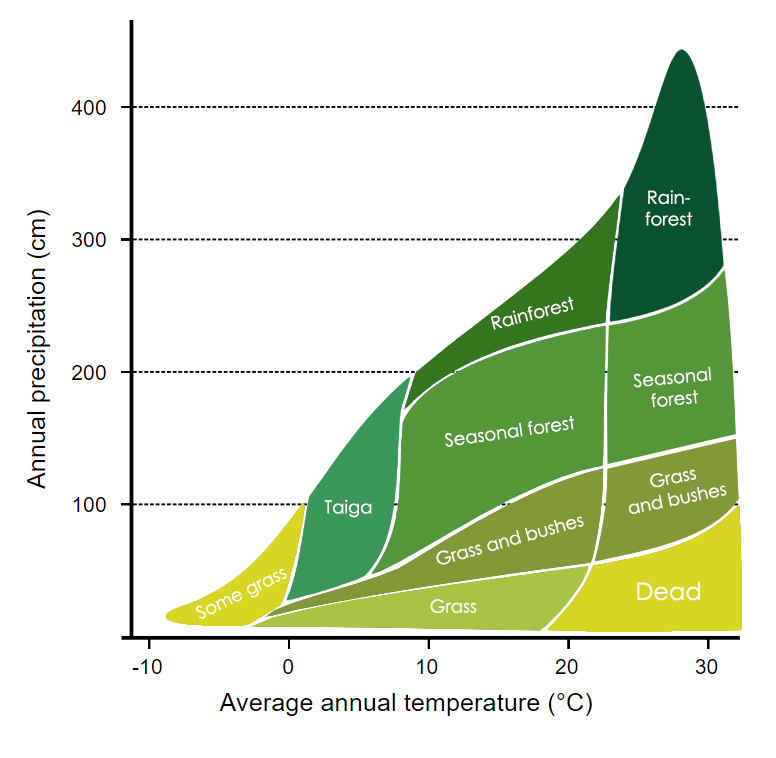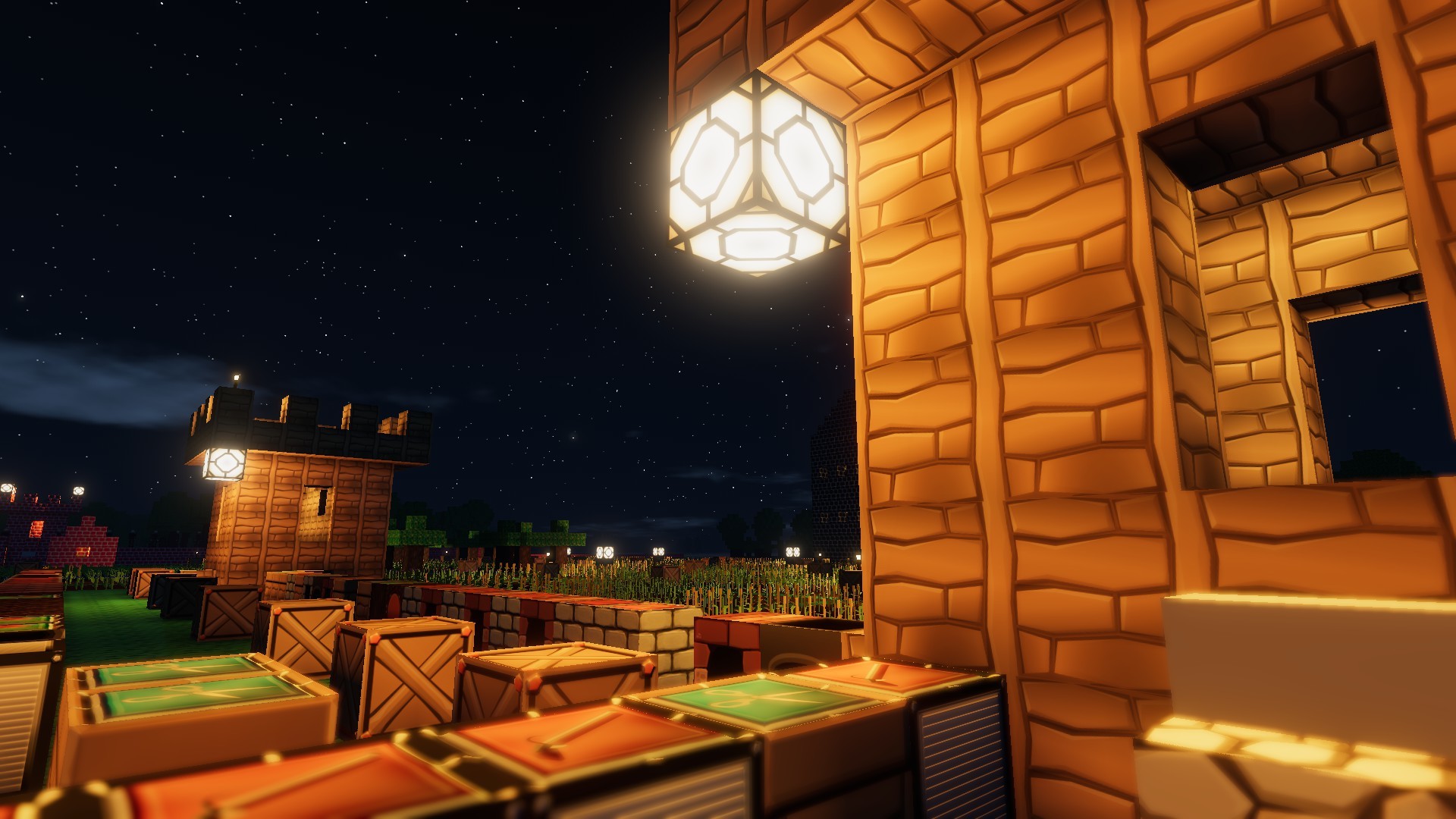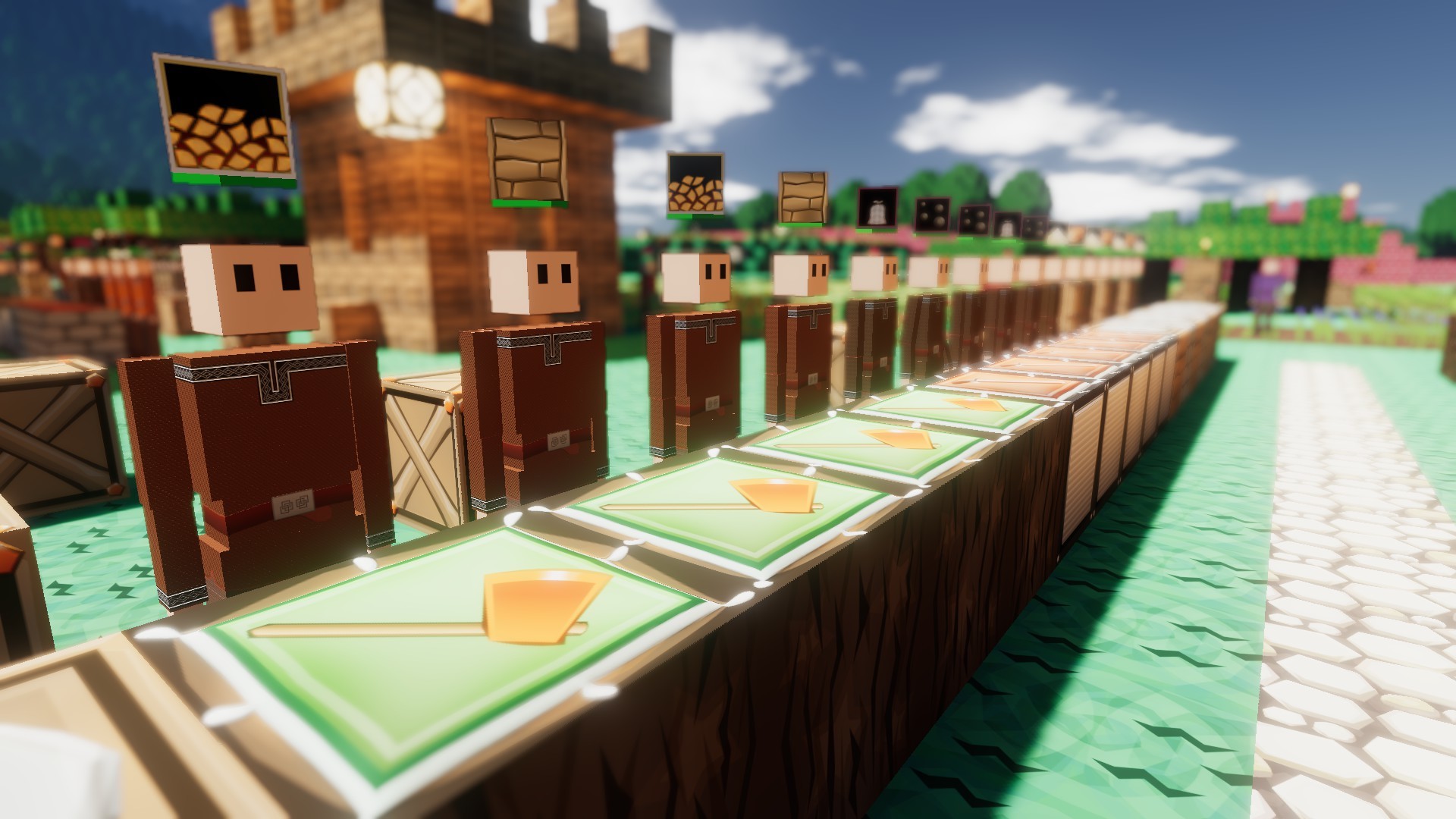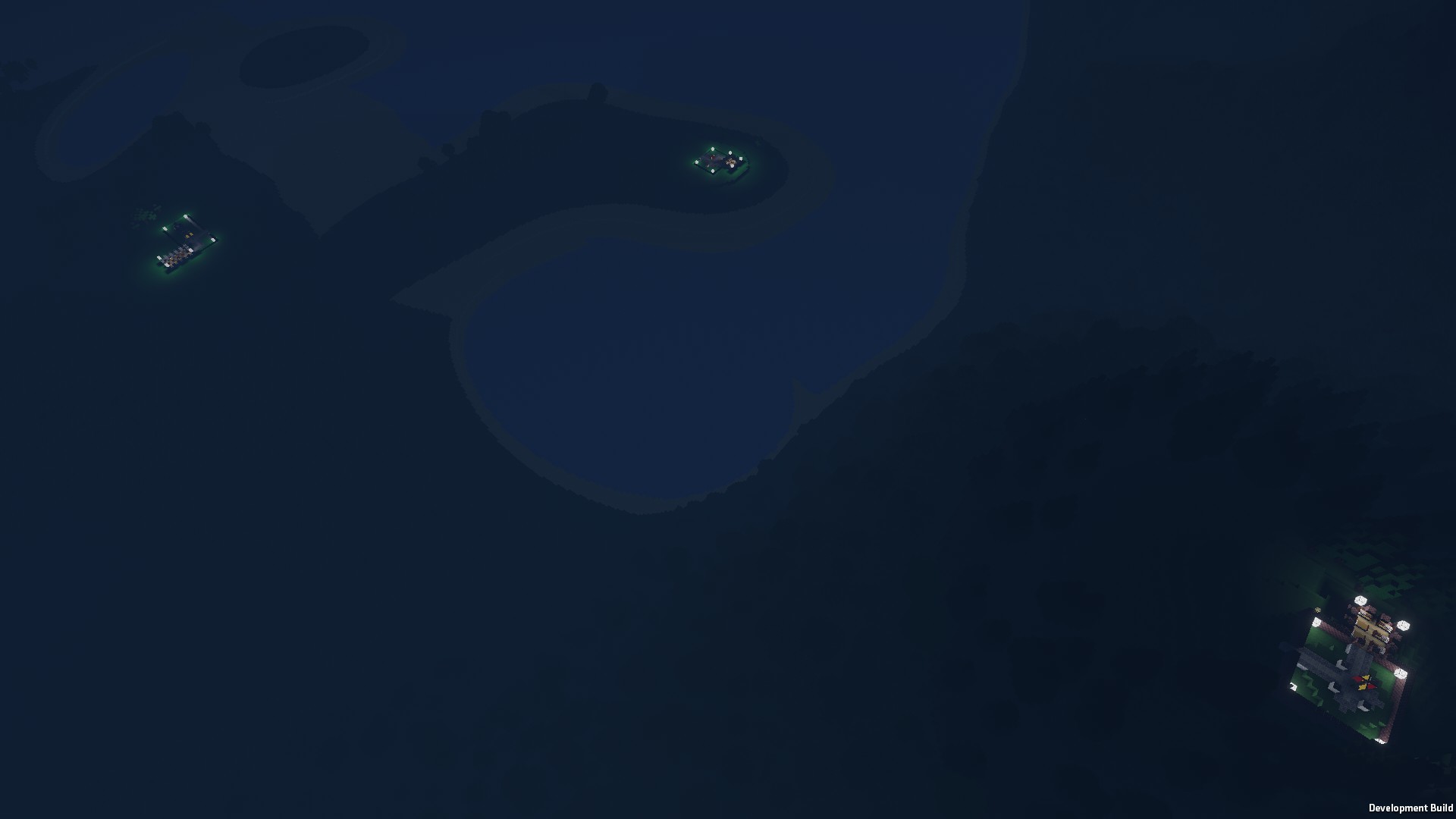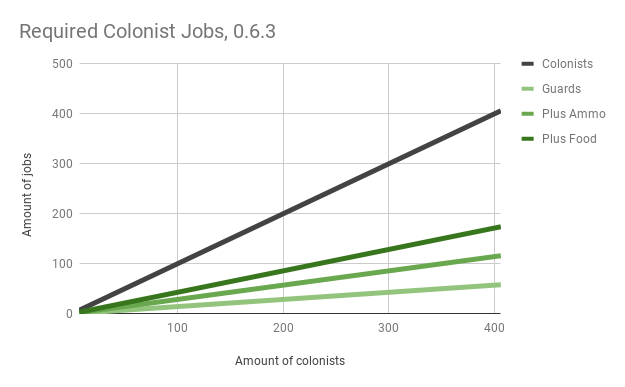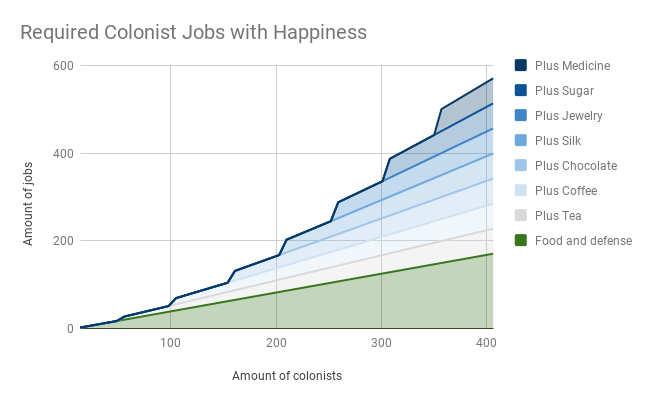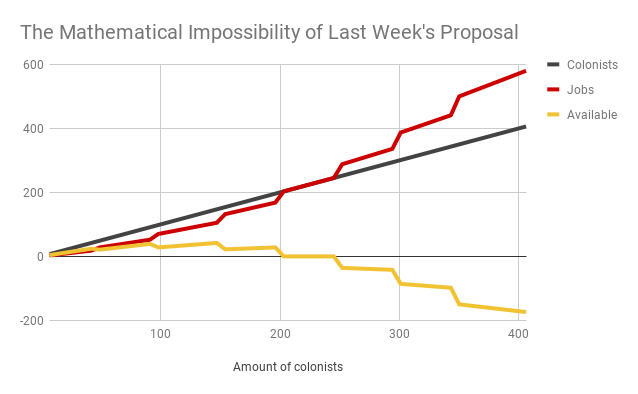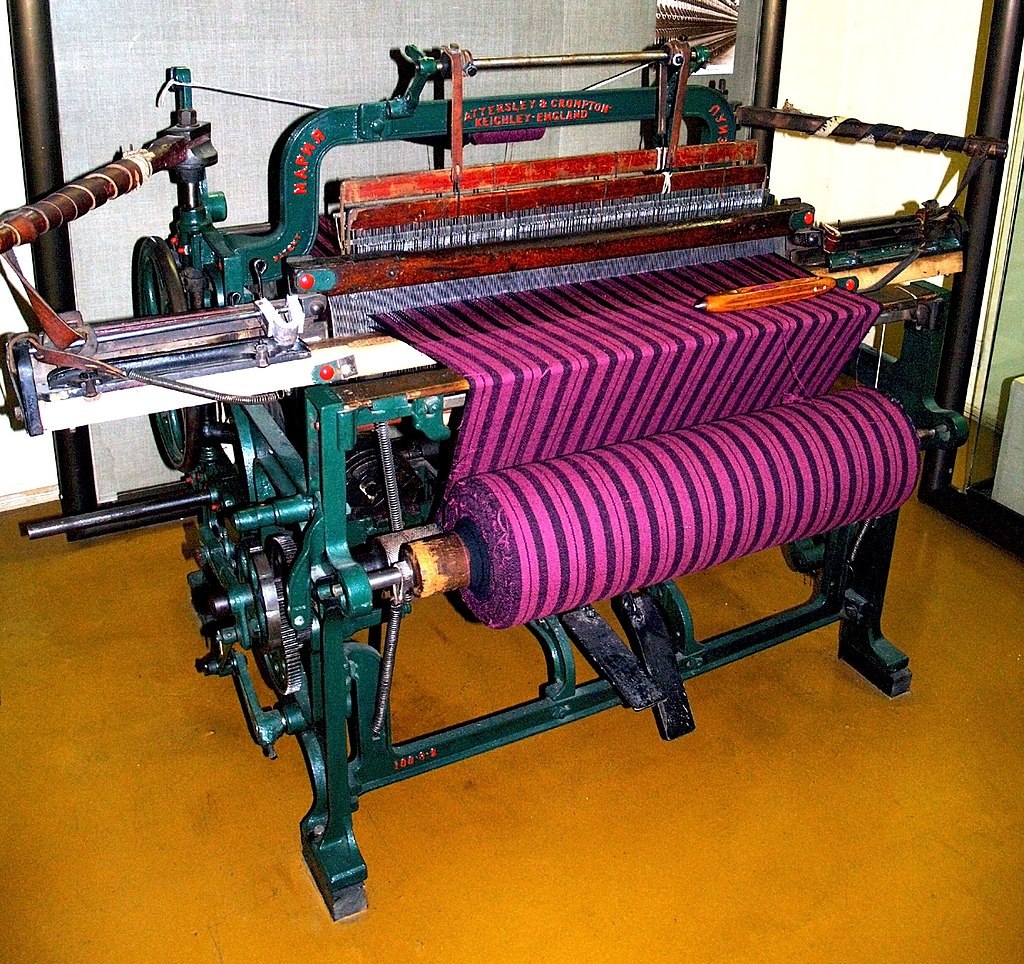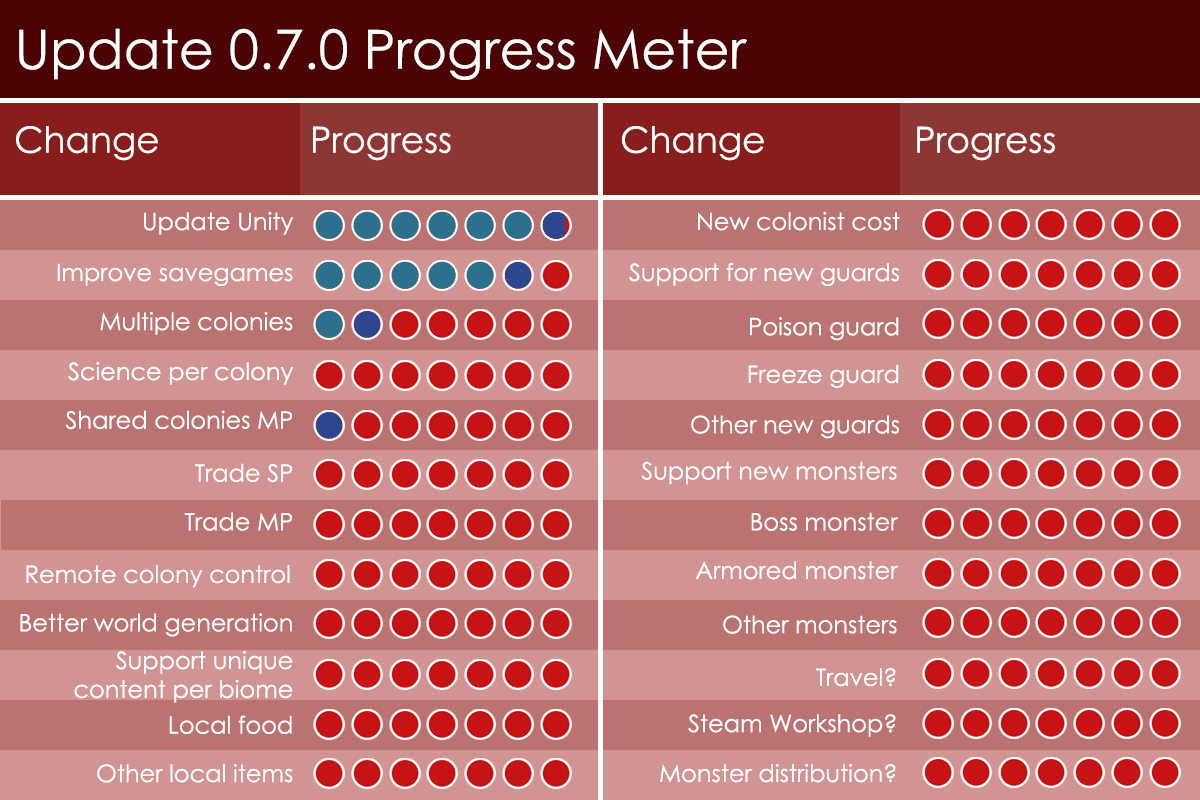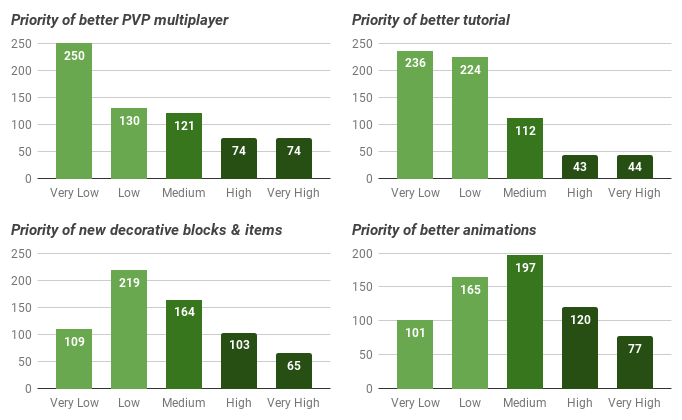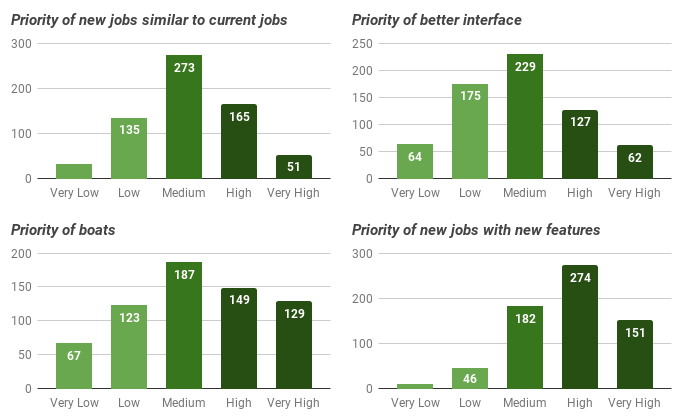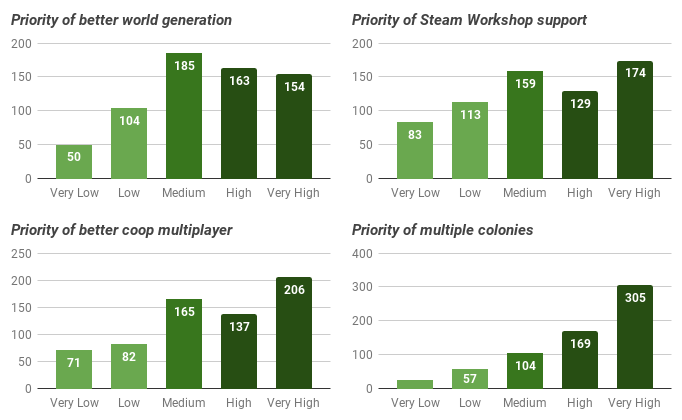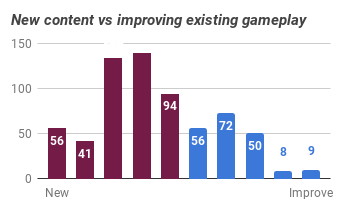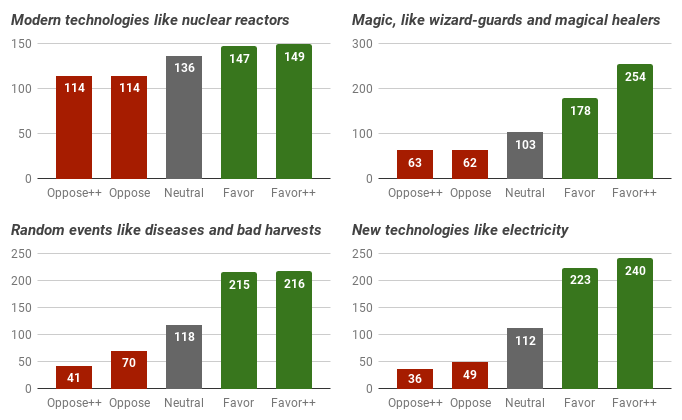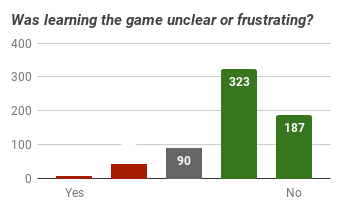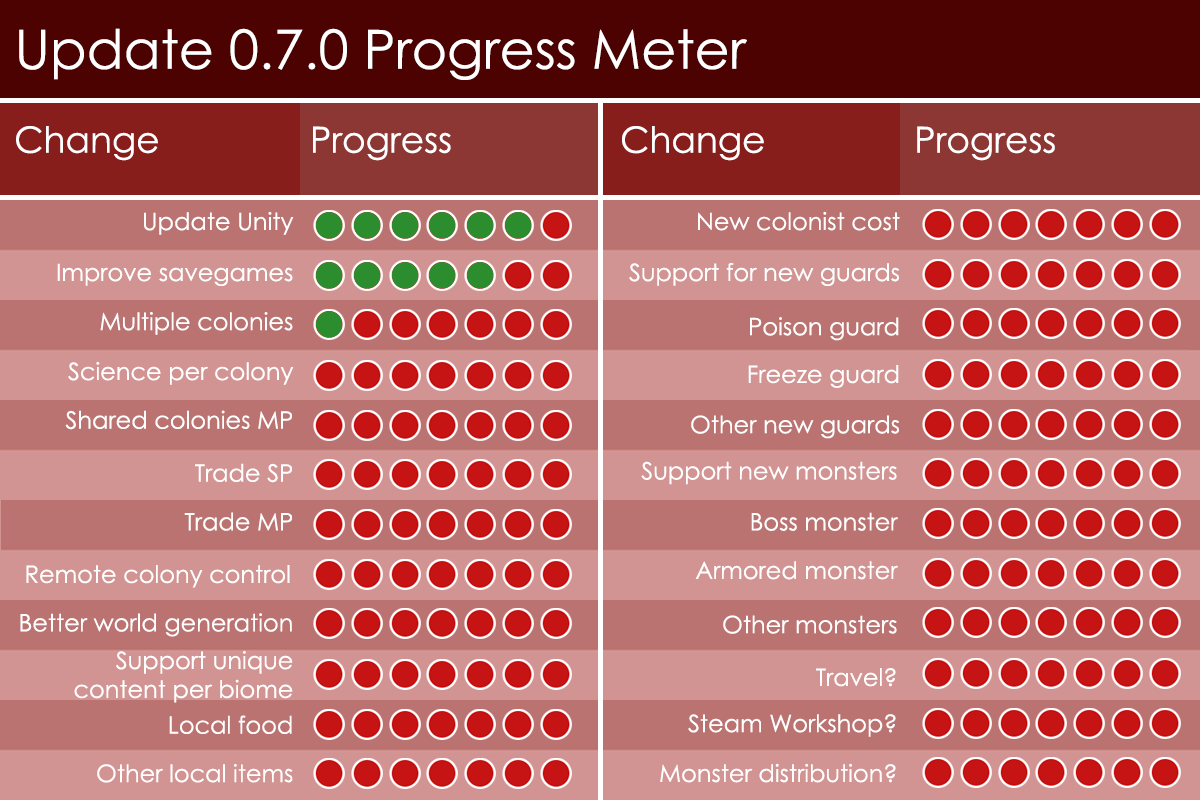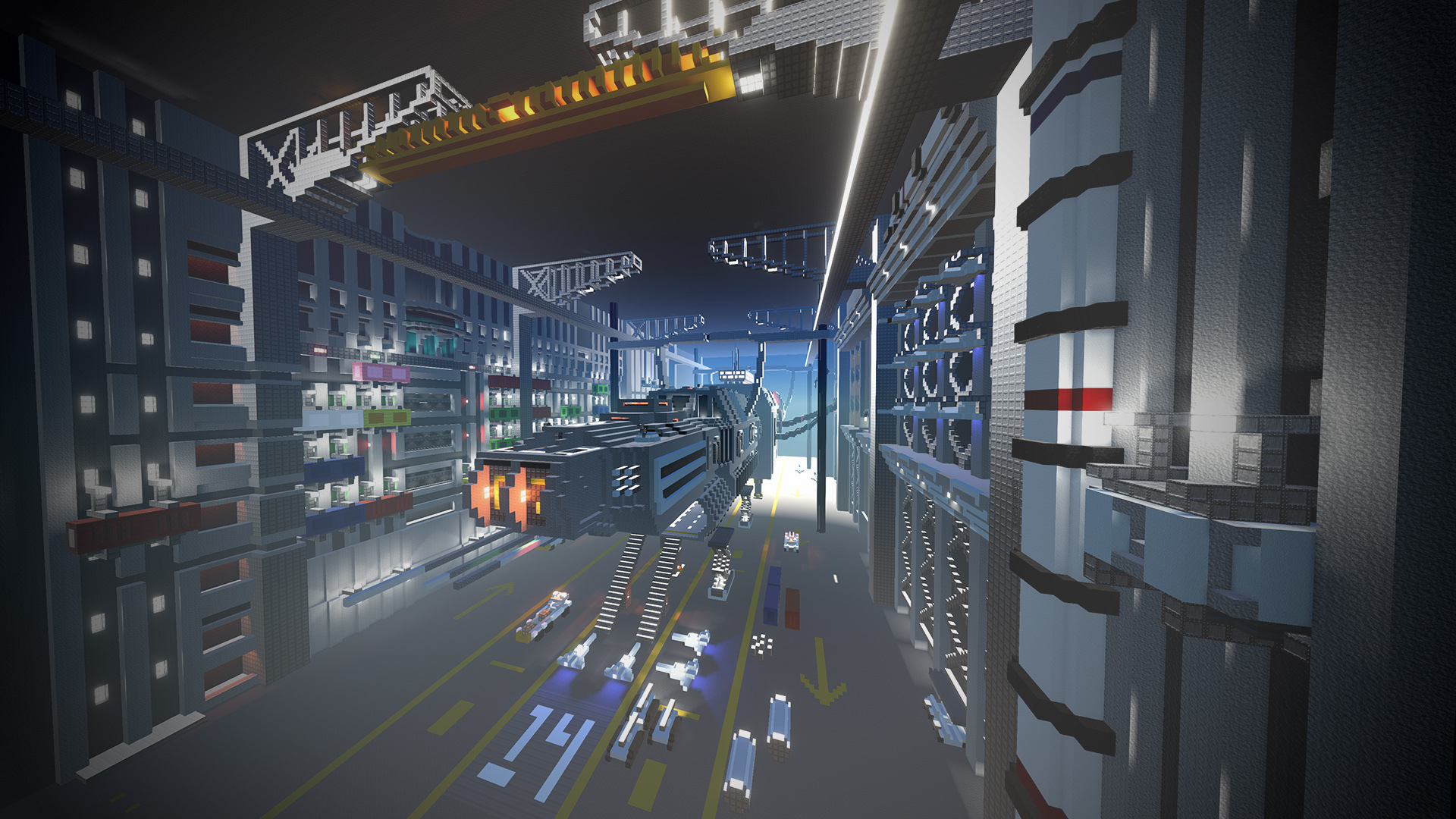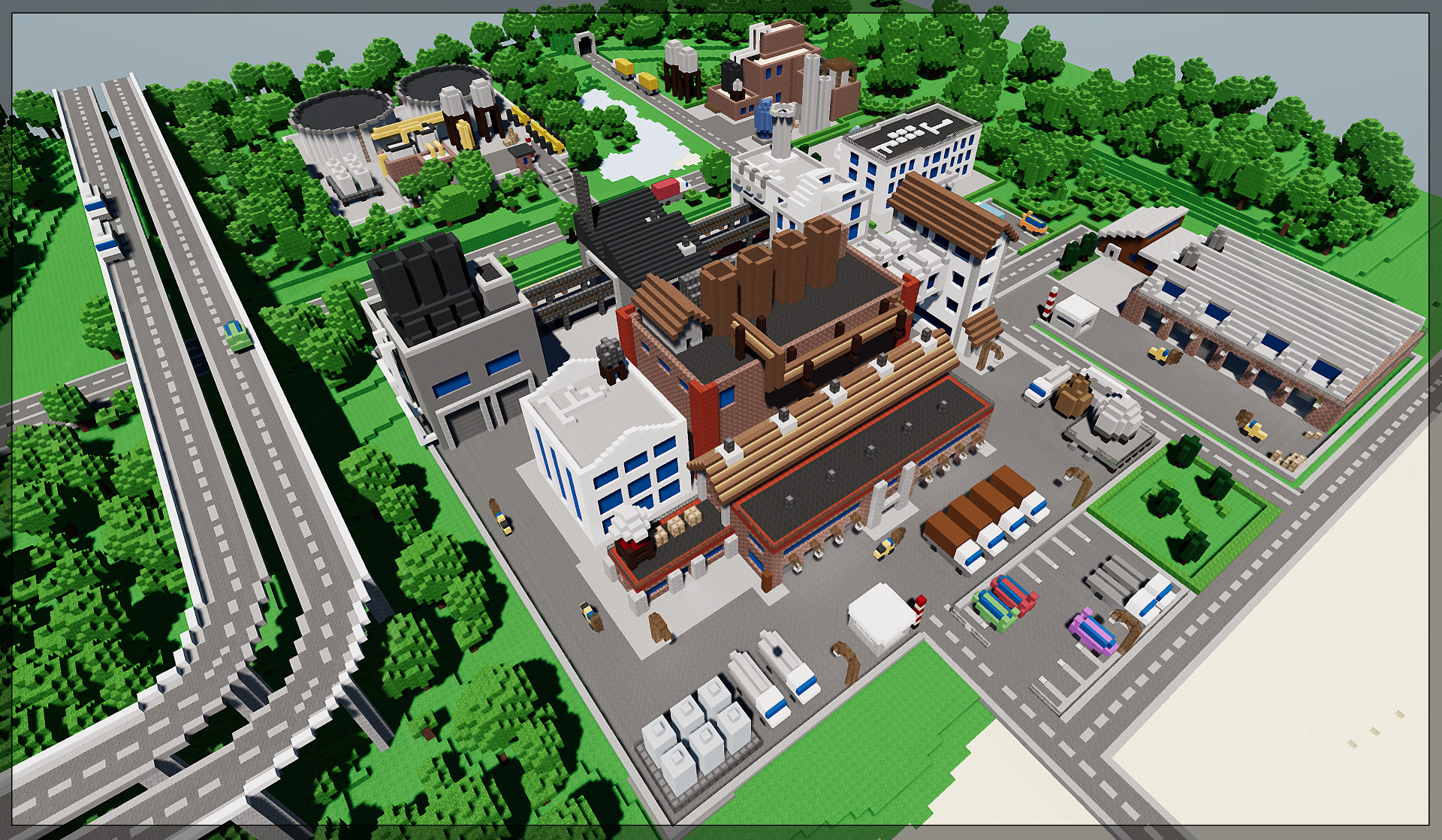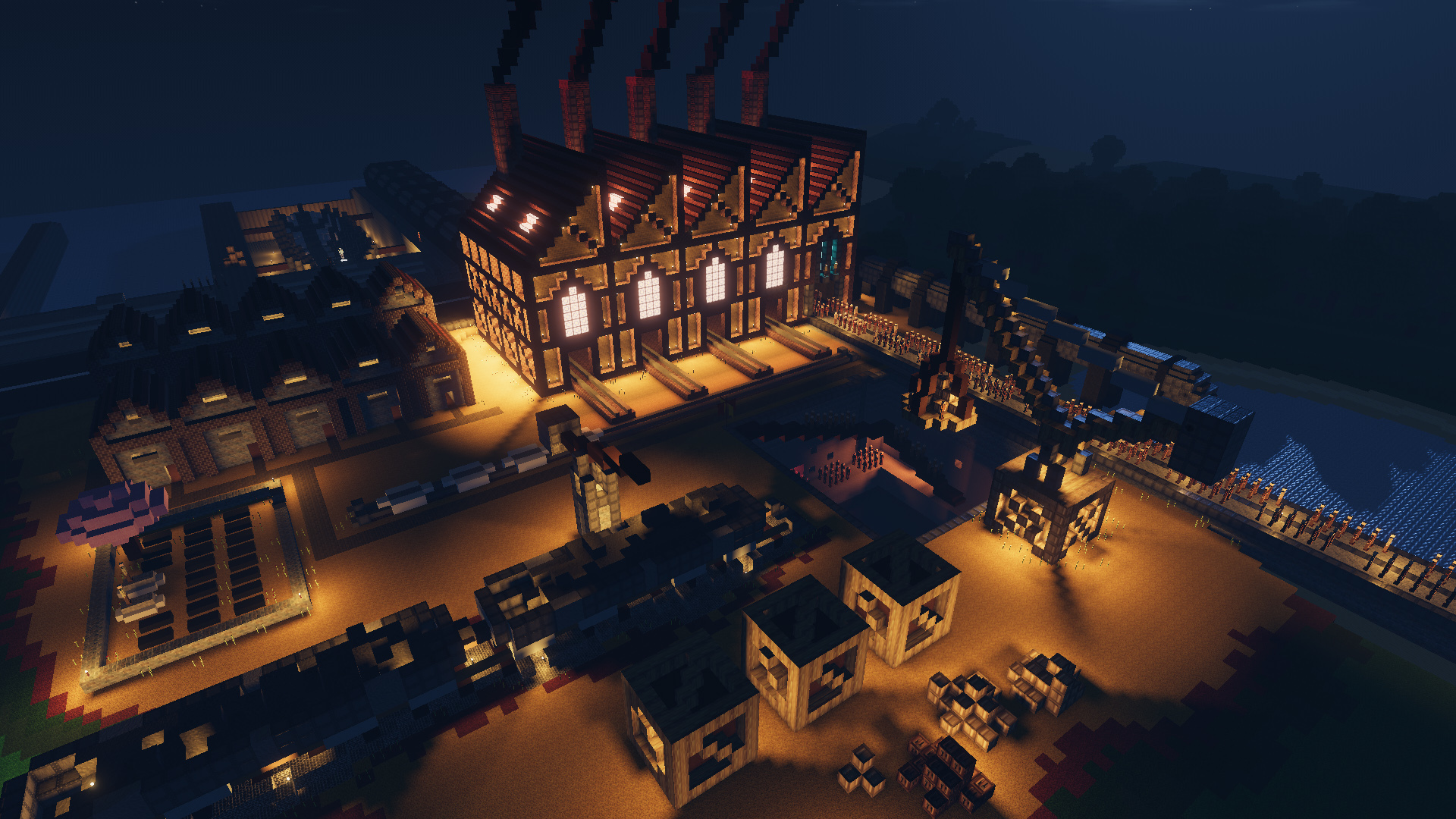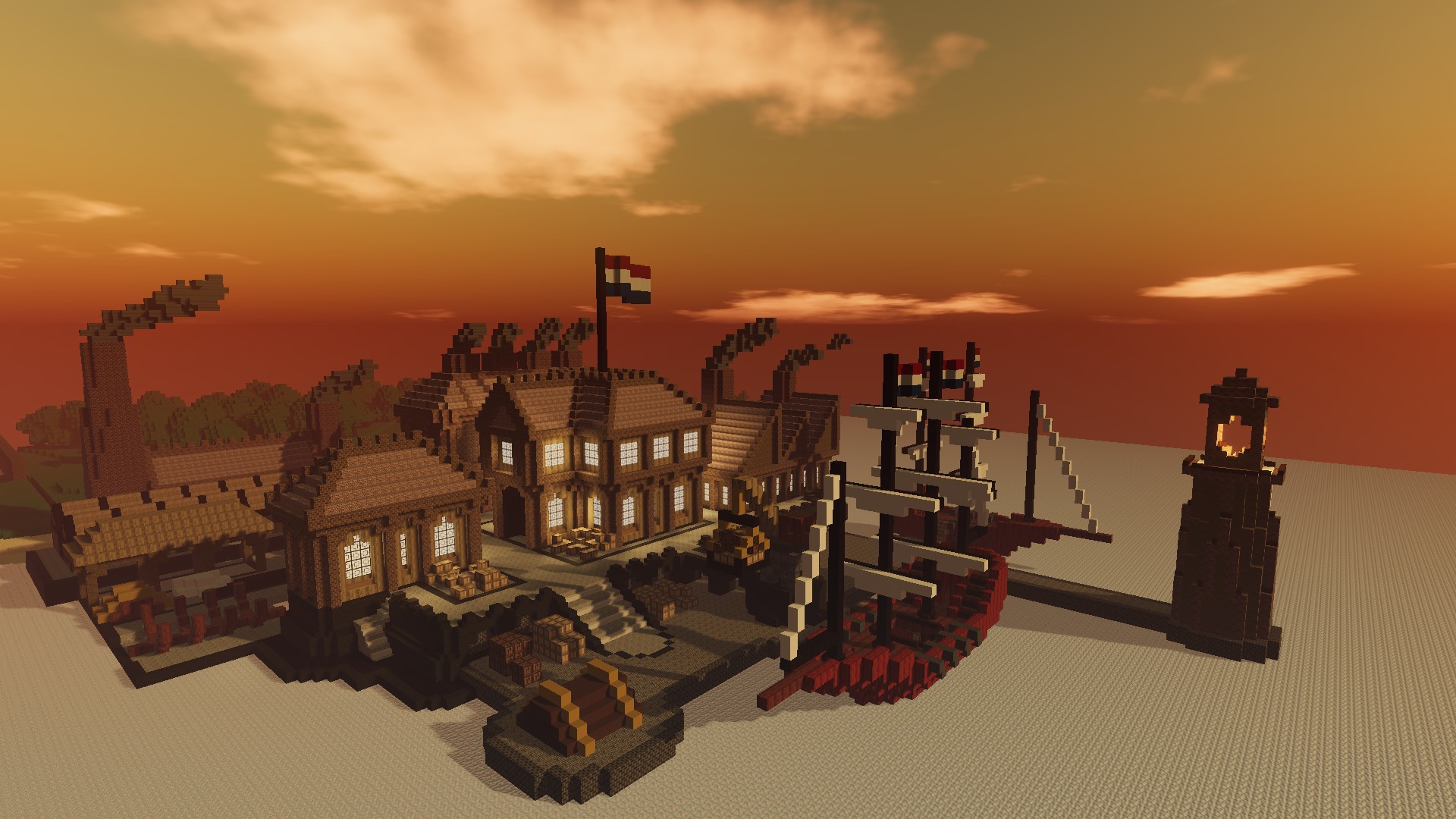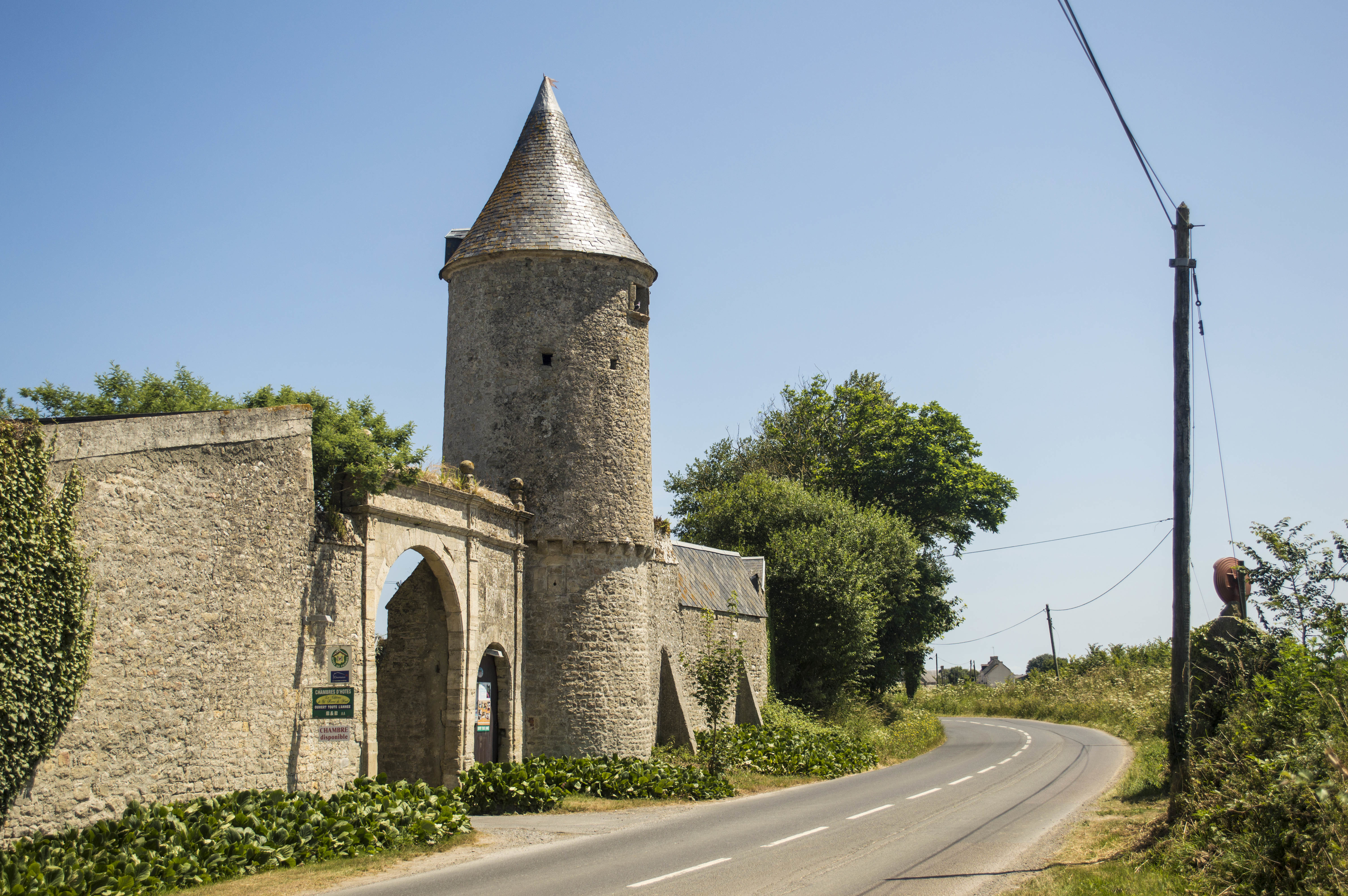
Colony Survival - Pipliznl
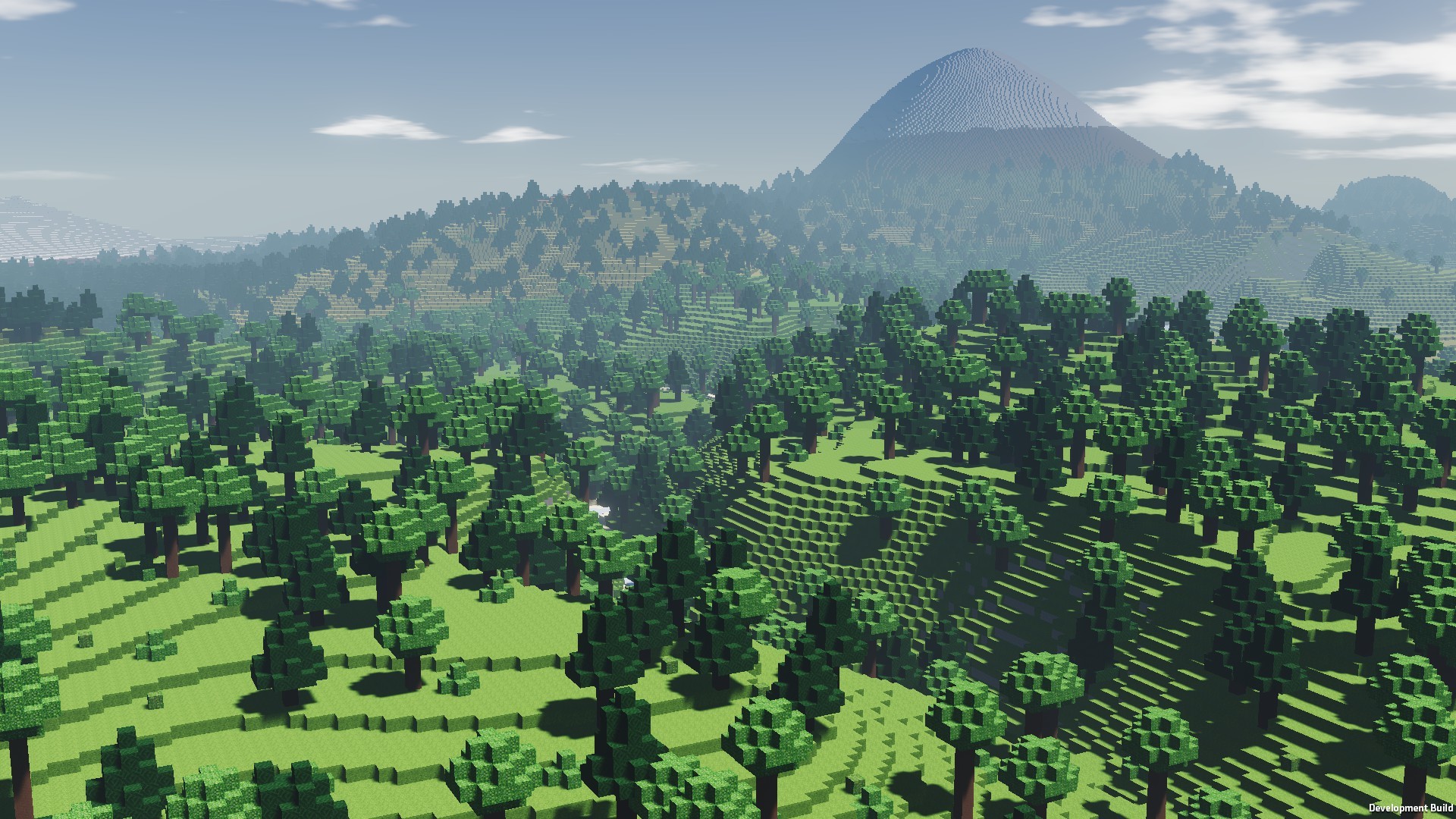
Fullscreen
We've made good progress on the new world generation this week! We've added cliffs and some kind of tiny rivers, and new trees. We're very happy with the results! Here's a video featuring the new terrain:
https://youtu.be/QQ50AmplF3g
While traversing the new terrain, the command "/debug printbiome" can be used to display info about your current location. Here's an example of using that command thrice:
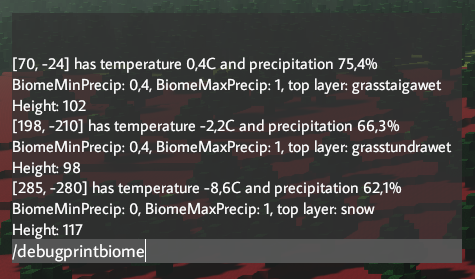
Temperature and average rainfall (precipitation, in-game stat only, no visual effects) change gradually, ensuring a smooth transition between different areas. With those stats in mind, the new terrain generator selects an appropriate biome.
In the past, trees were predetermined structures. They had to be built by us, manually, block by block. We saved the structure, and the structure was loaded into appropriate locations. For the new world generation, Zun has written a program that can quickly convert simple instructions into a complete tree. This makes it a lot easier to add new trees!
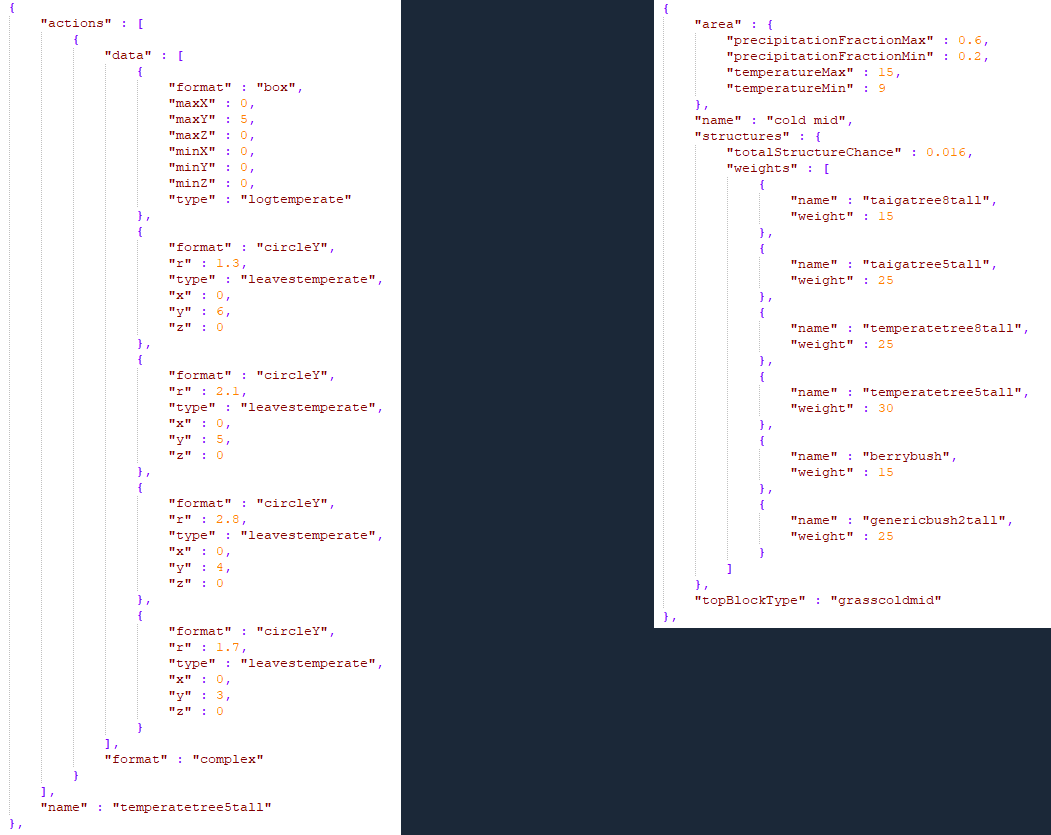
Fullscreen
To the left is an example of the tree instructions. The first "box" instructions cause the renderer to generate a trunk made of "logtemperate", 5 blocks tall. The second block of code titled "format : circleY" generates a circle of leaves on top of that trunk. The next blocks of code generate more circles of leaves.
To the right is an example of one of the biomes. The lower bounds are 20% rainfall and 9°C, the upper bounds are 60% rainfall and 15°C. The "totalStructureChance" defines the total amount of vegetation. It's followed a by a list of trees and bushes that spawn in that biome. The higher the weight, the bigger the chance of spawning that particular tree.
The code above isn't hidden deep in an inaccessible generator, it's easily available in a couple of .JSON files. It is now very easy for modders to add their own structures, and to change the terrain generation! We're sure there are talented people with more artistic skills and patience than us who will be able to improve dramatically on the examples above. We're looking forward to seeing their results!

Fullscreen
Currently, the world is one infinite continent with randomly fluctuating temperature and precipitation. There is no cold north nor a hot south. That's our next job. The shape of the continents should be pretty random, every world should be different. But the "standard" biome in the center should be bounded by obstacles in all directions. A cold tundra in the north, a dry steppe in the east, a hot desert in the south, and an ocean to the west. On the other side of the obstacles should be different biomes, where new colonies can be started and new resources can be generated and extracted. It'll be an interesting challenge!
Bedankt voor het lezen :)
Reddit // Twitter // YouTube // Website // Discord








